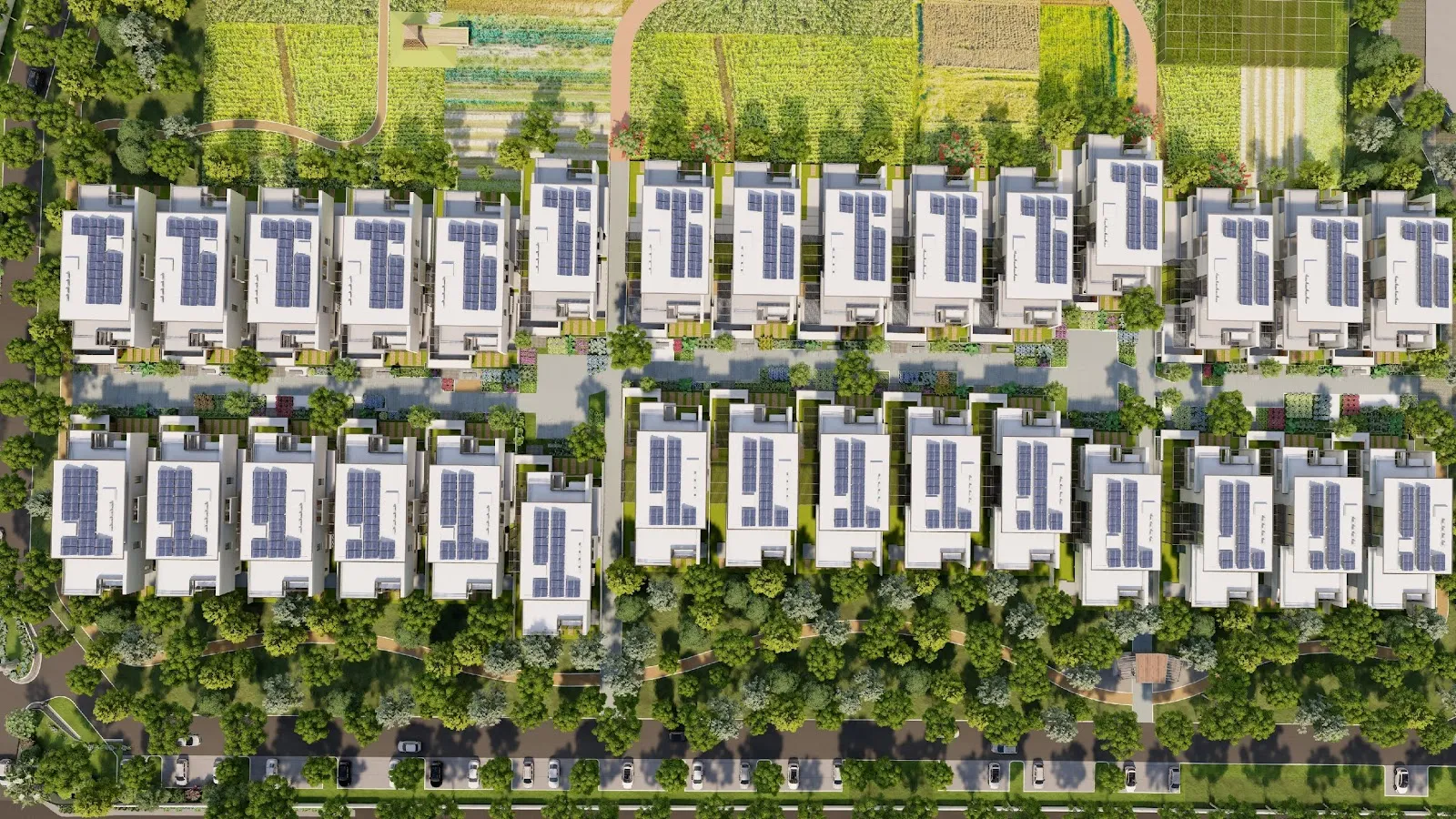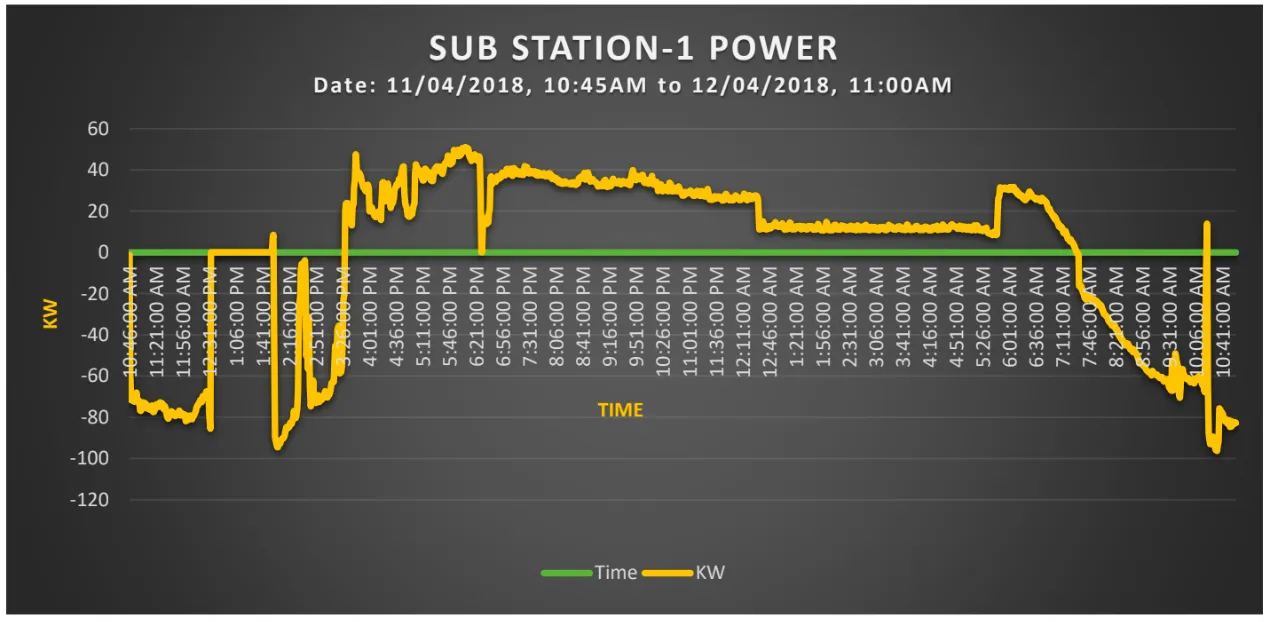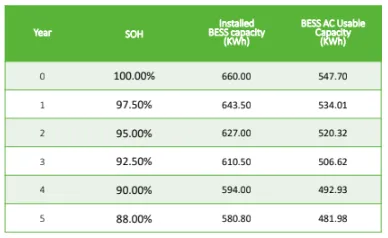 Contact us
Contact usIntent
Community
Studio Organo Concepts
About Us
Subsidaries
Studio Organo
TS RERA No.P02400003403.
TS RERA No.P02400003403.
In part 1, we discussed optimizing buildings to reduce energy consumption right from facade to heat loads coming into the building, as a first step to getting rid of fossil fuels. As a follow up, this article is about how the community should be designed to further minimize energy consumption, at an infra level.

At Organo, priority is always given to collective sharing of resources. Just like centrally stored rainwater and common farming areas, energy production is also centralized and shared. The rooftops are used to generate power, but the distribution happens through a micro-grid within the community. This micro-grid acts like a mini grid to which all power sources are connected, including the energy produced by burning biogas from the biogas plant. The schematic below shows micro-grid network in play.
Why is Micro-grid the ideal power distribution method?
Micro-grids also help with uneven production of energy and sudden surges in demand. When the power is shared by the entire community, sudden surges in power in one unit will not affect overall energy availability much. Consequently, sudden changes in sunlight such as cloud cover will not have as much impact on availability of power as the entire system is like a 1-Megawatt power plant.

What happens when there is excess power produced?
The excess energy produced in this micro-grid is at once exported to the main government grid. Whenever there is more demand than the energy production in the community, energy is imported from the government grid.
Typically, the flow of energy in and out of the community is as shown below.

Chart showing energy in and energy out of the community through net-metering. Values below zero show energy export and values above zero show energy import.
How does this correlate to the energy consumption for each household? A typical home consumes energy as shown in Figure 1 below:

As can be seen, energy requirement is highest when solar power production is lowest. To avoid this problem, net-metering with an on-grid system is necessary.
Why is not-metering may not ideal?
For net-metering (import and export of energy) to work, the inverter must synchronize itself with the main electricity grid with respect to voltage, frequency, and power factor. When there is a power cut from the Mains, the inverter must island itself. This is to ensure that power is not pumped into the Main Grid which may be under maintenance and prevent accidents to linemen working on the grid.
This means, when there is no power in the Main Grid, there is no power generation in solar system within the community even at peak solar power generation in the afternoon. The only possibility is to run the diesel generators every time the power is gone in the Mains. This is a challenge.
Can we have a system in place which can make our community fossil-free while also ensuring power is produced without dependence on Mains Power?
One way that we had explored is to have a Li-ion battery bank which stores energy in the afternoon and supplies power to the community at night. This has no dependence on the Main electricity grid.
Does this make sense financially?
The answer is of course, no! Batteries are expensive with replacement needed regularly and has a degradation year on year.

But what if we get rid of all Home Inverters and invest that money in a central battery bank?
And what if we do not buy DGs and invest that money in the central battery bank?
And what if we consider the recurring costs of diesel in the life cycle cost analysis?
And what if we consider the cost savings coming from not installing electric vehicle chargers as the battery bank can directly be used to charge electric cars?
And what happens to the batteries after their lifetime?
If these questions are answered and it makes sense financially and maintenance-wise, we are potentially looking at creating off-grid communities at Organo.
And we have every intention to create off-grid communities. If you know of potential answers to these questions or ideas that can help us in getting to our goal, do contact us. Let us make truly off-grid communities a reality!
